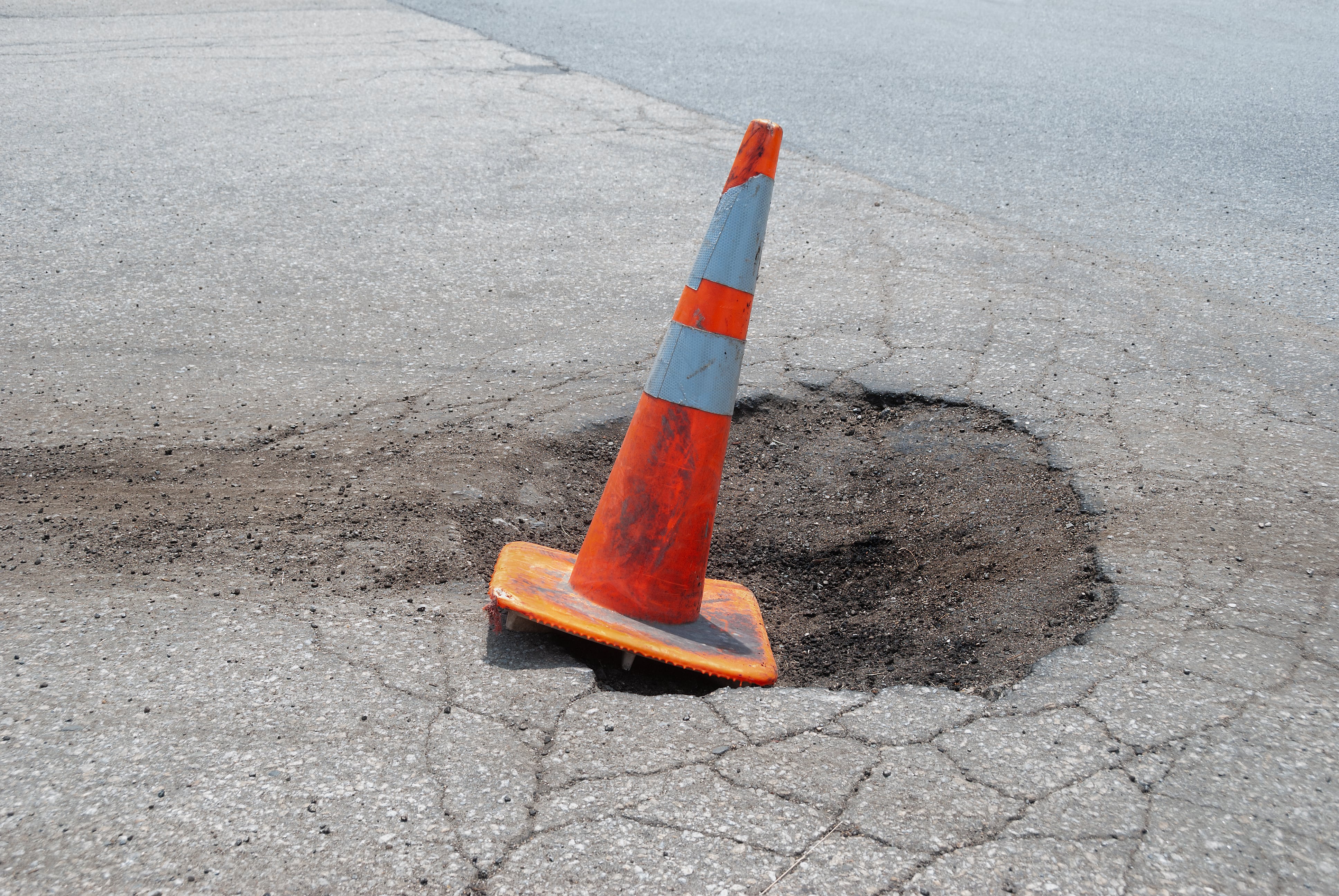
September 29, 2020
Potholes, Lost Sleep & Smart Cars
How Close Are We to Smart Cars and Intelligent Infrastructure?
Recently, while driving home in the dark, I hit a pothole at 40 miles per hour. It was a distressingly familiar sound, which immediately made my heart sink. And that’s because a previous pothole experience had made my bank account lighter by more than $2,000.
On this recent night, after inspecting my tires, I determined there were no immediate signs of damage. But this didn’t keep me from losing sleep over it. I had an important appointment the next morning, so I got up twice in the night to check the tires by starting the car and looking for the low tire pressure alert symbol on the dashboard. I also used the old-school method of kicking the tires to check for signs of deflation.
What could have helped ease my mind that night?
The road did not warn me. That’s perhaps a lot to ask. But what if the entire roadway could emit some kind of glow? The part not glowing might have given me a clue of danger ahead, allowing me time to maneuver, assuming of course, I was paying attention.
No other car warned me. Even at that hour, there were lots of cars on the road, but none of them sent out a broadcast to others (automatically) to warn against the potential hazard.
Even my own car did not assure me after the hit that all was fine and I should keep driving. This is perhaps the near-future possibility, where sensors in your car could be activated after sudden impact from a pothole or some other object, run diagnostics and report on the state of the car. Could an automated diagnostics system have kept me from losing sleep by immediately assessing and reporting on the condition of my tires? Could the car have done this over night periodically while I was sleeping? And if a problem was diagnosed, then perhaps the car could have called Urgently automatically to send someone to fix the tire, and ensure I could keep my appointment.
Connected Cars and Automated Diagnostics – How Close Are We?
We may be closer than you think to widespread availability of the smart car of the future – one where faults and problems are determined in real-time and where potential faults can be identified before they become bigger problems or even damage.
According to research firm IHS Markit, 72.5 million connected cars will be sold globally in 2023. In addition, Global Market Insights reports the automotive diagnostic scan tools market is expected to grow from $33 billion in 2018 to over $49 billion by 2025. The market growth is attributed to the increasing sales of passenger vehicles, transforming vehicles from hardware-driven machines to software-controlled electronic devices.
Even tires are getting smarter. One example is a new RFID-enabled tire by Michelin which was on display at the recent Tire Technology Expo 2020. The RFID tires were originally introduced in 2017 for commercial trucks to allow fleets to efficiently manage their maintenance and assets. The technology is now being made available for cars.
“For all passenger car tires and truck tires, having RFID inside is a key enabler to ease tire management across the whole life cycle, and to be an enabler of more advanced future predictive maintenance services,” said Laure Verdouck, communication manager, business venture connected mobility, Michelin. “RFID also provides a unique identifier throughout the entire lifecycle – it is the only identification technology to track the tires from manufacturing to recycling.”
Indeed, the smart car of the future is not so far away. As for me, in the end, my tires were fine and I made it to my appointment with no trouble the next day, albeit a little weary from a disrupted night’s sleep. I imagine there will be more potholes in my future. But perhaps the next time, my car will be able to tell me, “Don’t worry, keep driving.”















